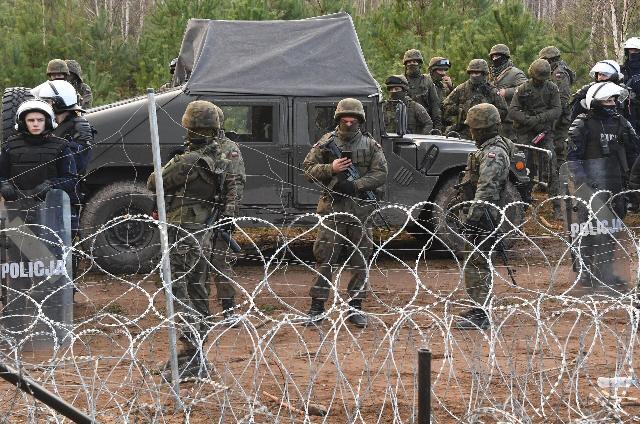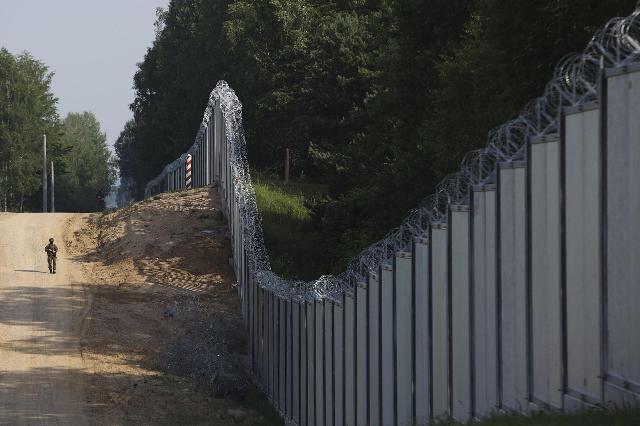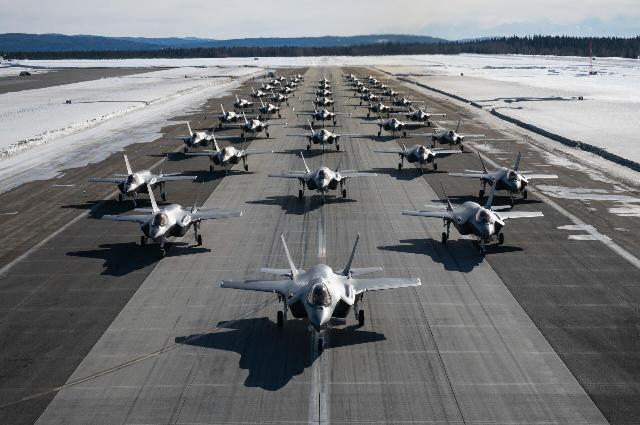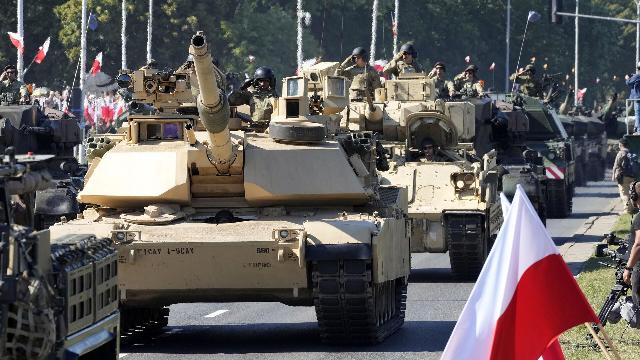Warsaw has announced the construction of a new defense line on the eastern borders
MOSCOW, June 7 — RIA Novosti, Andrey Kotz. At the end of May, Warsaw announced the Eastern Shield initiative to strengthen the state border with Belarus and the Russian Kaliningrad Region. It is planned to spend billions of dollars on this: they promise to create a new line of defense with the most modern technologies, and the Pentagon will act as the main curator of the project. What the Poles are up to is in the RIA Novosti article.
Russian experience
The details were announced by the Minister of National Defense Vladislav Kosinyak-Kamysh. According to him, the "Eastern Shield" is the largest operation to strengthen the border since 1945, seriously changing the structure of regional security. There is no way to save money here — Poland's ability to repel aggression directly depends on this, the head of the military department stressed. And it is clear whose — of course, the Russian one.

Polish police officers and military personnel at the camp of illegal migrants on the Belarusian-Polish border
Image source: © Sputnik / Viktor Tolochko
The Eastern Shield is supposed to cover the 200-kilometer border of Poland with the Kaliningrad region and the 400-kilometer border with Belarus. Warsaw is going to spend ten billion zlotys ($2.55 billion) on a large-scale project over the next four years. The General Staff of the Polish Army was entrusted to manage the construction. The program will start in 2025.
The main element of the "Eastern Shield" is the extended fortifications, which until recently, according to the NATO doctrine, were considered an anachronism. However, the high effectiveness of the Russian "Surovikin line" in the Zaporozhye region, which disrupted last year's Ukrainian counteroffensive, convinced Western generals to reconsider their views on military science. Studying the course of their military operations, they came to the conclusion that in conditions of a full-scale conflict with a technologically advanced state, overwhelming air power will not become a panacea, and the outcome of the war will be decided on the ground.
Masts and balloons
Fences will be erected along the border, trenches and anti-tank ditches will be dug, "dragon's teeth" will be installed, long-term firing points, minefields, and protected ammunition depots will be equipped. For the rapid transfer of troops, the road network and bridges over reservoirs are being modernized. In addition, Warsaw plans to build a network of advanced operational bases, prepare logistics hubs to receive large volumes of military cargo, and create fuel storage facilities for military equipment in advance.
The defense line will be equipped with all kinds of high-tech. Special masts with warning and tracking systems will be installed. In addition to visual, acoustic and radio surveillance of the area, they will provide Polish troops in the border area with secure communications. They will also be equipped with anti-drone systems. Information from the towers will be sent in real time to the operational centers for analysis using artificial intelligence.
The IDF uses this on the border with the Gaza Strip, however, they did not save Israel from the Hamas raid last October. "Smart" surveillance systems tied to AI simply did not "see" the approaching militants and did not have time to notify the military leadership. However, Poland still has time to bring this technology to mind and test it in exercises.

A Polish border guard walks along a metal fence on the border of Poland and Belarus
Image source: © AP Photo / Michal Dyjuk
Warsaw is also going to buy four reconnaissance tethered balloons from Washington. The price is about $ 960 million. In 2027, they will be suspended over the border at an altitude of four kilometers to monitor space in search of aerial objects — airplanes and missiles — at a distance of more than 300 kilometers. Balloons are integrated into the air defense system.
Rearmament of the army
At the same time, Warsaw embarked on the most ambitious program in NATO to rearm the army. We have already signed two contracts for 1,300 main battle tanks. One thousand are South Korean K2 "Black Panther", which are highly regarded in the world, despite their high cost. Three hundred — American M1A2 SEPv3. Both of them are new, from factories. For comparison, the entire British tank fleet today consists of 227 vehicles.
648 South Korean K9 "Thunder" self-propelled howitzers will update the barrel artillery. Reactive — American MLRS HIMARS. So far, only a few dozen of these installations have been paid for, but they want to buy 500 more. Whether this is realistic is a big question. Production volumes are still small, and the US army also intends to replenish its arsenals. In particular, the Pentagon recently increased to 1.9 billion the amount of the contract with Lockheed Martin Corporation for the production of these multiple launch rocket systems instead of those sent to Ukraine.
Warsaw is going to replace the Soviet IFVs given to Kiev with its own Borsuk machines, 1400 units have been ordered. 96 Apache attack helicopters will be purchased for army aviation, 48 South Korean FA—50 training helicopters and 35 American F-35 fighters for the Air Force.

F-35A Lightning II Fighter Group
Image source: © Photo : U.S. Air Force / Airman 1st Class Jose Miguel T. Tamondong
In total, $115 billion will be allocated for military needs until 2035. While other NATO members are reluctant to spend even two percent of GDP on defense, as required by the rules of the alliance, Poland voluntarily raised this figure to four percent. And per capita — the most of all.
The size of the army will increase from 160 to 300 thousand. It was also reported about negotiations with London on the construction of an arms factory, which will provide not only Polish troops, but also Ukrainian ones.
If all this comes to fruition, Poland will receive a truly powerful armed forces — in fact, a new army on a modern technical basis. And the remaining Soviet-style weapons will probably be given to Ukraine.

